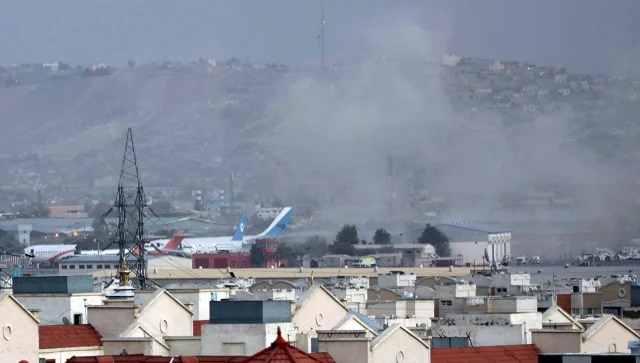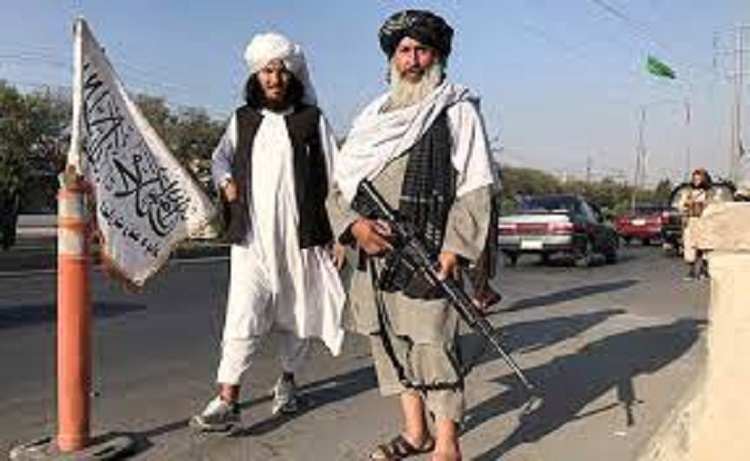Defence Ministry and policy planners in India were unnecessarily impatient to respond positively to the Pakistan Army’s offer of ceasefire in Jammu & Kashmir in February last year. Such strategic decisions should never be taken in haste or under an impulse. Was it not important to condition the ceasefire with no infiltration component?
Pakistan wanted a respite on her border with India to upgrade its military and intelligence involvement in the Afghan conundrum. She got it, thanks to our misplaced eagerness.
India’s impatience sans deep introspection emanated from the outcome of our eyeball to eyeball stance with China on the Eastern Ladakh border. Our whole hog concentration on the Ladakh border did not make China change its deportment but Pakistan did find time to finalize a blueprint for the takeover of Kabul through the joint but covert operation with the Taliban.
Pakistan trounced the US as she has been doing in the past just because she has lavishly humoured moles in the Pentagon. In this perfidious trickery, of which the Doha dialogue is the high watermark, Pakistan emerged as the top gainer.
Pakistan’s Afghanistan gambit
The sudden visit of ISI chief Faiz Hameed to Kabul and securing the Interior Ministry portfolio for Sirajuddin Haqqani, son of the founder of Haqqani network late Jalaluddin Haqqani, and cooling down the heightened spirits between the two rival groups (Haqqani and Baradar) showed that Pakistan was playing a larger than its size role in what was unfolding in Afghanistan. How long will the ISI brokered reconciliation last remains to be seen.

Two or three weeks after the formation of the council of ministers of the Taliban regime, Pakistan took in hand two important missions. One is to secure formal recognition of the Taliban regime by more and more countries, and the other is to buttress its Kashmir operation by harnessing the Islamic jihadist factor.
Pak foreign minister Shah Qureshi knocked at the door of some Islamic countries to plead for the recognition of the Taliban. He began his mission with a visit to Tajikistan where he was snubbed by the veteran Tajik President Imomali Rahmon. The Central Asian Republics all gave him a cold response. Central Asia has divorced religion from politics. India miserably failed to dovetail her interests to this phenomenon in good time.
Nevertheless, Pakistan’s “iron brother” China would not fail her, not for any steel-frame fraternity but China’s own long range economic and strategic interests. Earlier, China invited a nine-member Taliban delegation headed by Mullah Baradar to Beijing for talks about providing support to cash starved Taliban. She has committed about US$ 31 million by way of aid under various heads. At the same time, China has indicated her willingness to recognize the Taliban regime at its proper time.
President Putin has been blowing hot and cold in the context of Moscow’s policy towards the Taliban. He cannot accept them because Russia rejects terrorism, and she cannot reject them outright lest the Taliban mend the fence with the Americans which is a near possibility. The statement by various leaders that recognition of Taliban depends on their performance is the ostrich like excuse of hiding the head in a dune and believing nothing wrong is going to happen.
Some observers think that there are some hidden clauses in the Doha Agreement. There are questions like why the Afghan State forces were functionally crippled forcing them to desert or surrender to the Taliban in large numbers? Why was President Ashraf Ghani dumped so ignominiously and the way made for the Taliban to walk unhindered into his palace? Why the Americans walked away from Bagram airbase in the dead of night leaving an enormous war machine for the Taliban to loot? How the pro-America Afghans were left unprotected in a lurch, speaks of the imbecility of the planners of the Afghan war. The American defeat in the Afghan war was not inevitable but was invited.

After the fall of Kabul, the question that is hotly discussed in political, academic and media circles in India is whether, after stabilizing the administration in Kabul, the Pakistani handlers of Taliban will induce them to “liberate Kashmir from the domination of the infidels?” The Islamic mission of uprooting infidelity (kufr) from the face of the earth to convert it into Dar-al-Harab is what was drilled into the ears and minds of the Taliban students in the religious seminaries of Pakistan where they have received their education and training.
We have been closely monitoring the mixed reaction of the Taliban to this question. More matured and meaningful among the Taliban leadership believe that Taliban have a history of not fighting on the soil of a foreign country but remaining content with their own and national affairs. That may give some make-believe relief to Indian think tanks.
But on the other hand, the rabid anti-India Haqqani network is emboldened to announce Kashmir as their next mission. The Haqqani network is the creation of ISI which funds it for undertaking the subversive task of seriously hurting Indian interests in Afghanistan. A couple of attacks made on the Indian embassy in Kabul or on some infrastructural projects completed by Indian construction companies in Afghanistan were undertaken by the Haqqani network on the behest of ISI. The destruction of the Buddha statue in Bamiyan and massacre of Hazara Shias of North-Western Afghanistan, too, were the handiwork of the same Haqqani network.
The Haqqani network served as the master key in the hands of ISI which Islamabad used deftly to hoodwink the Americans who had been insisting on the decimation of the network.
Pakistan-sponsored Haqqani group in Kashmir
The ground situation motivates the Pakistani spy agencies to look for collaboration of the battle-hardened gunmen of the Haqqani group to exacerbate terrorist activities in Kashmir. Though the LeT– the Kashmir-centric terrorist group based in Pakistan are fully trained and equipped to take subversion to any extent in Kashmir, yet the Haqqani network has the capability of providing Kashmir chapter of Pakistani jihadist groups the wherewithal that would boost their morale and hone their guerrilla warfare in Kashmir.
Pakistan has been preparing for a drastic change in its war tactics necessitated by the surprising success of General Rawat’s Operation All-Out in Kashmir, which thinned the numbers of the home bred terrorists, dried up fresh recruitments and choked funding sources to a great extent. Under the revised strategy, the ISI has replenished the PoK (Pakistan-occupied Kashmir) and Khyber-Pakhtunkhwa based terrorist training camps mostly with Punjabi suicide bombers and recruits who now wield highly sophisticated weaponry left behind by the runaway Americans at Bagram airbase in Afghanistan.
Under revised tactics, The Resistance Force (TRF) is the name given to the new terrorist outfit now active in Kashmir. It is derived from the well-known LeT outfit and given a different name because LeT is designated by the UN and the US State Department as well. The newly recruited youth from Pakistani seminaries are instructed to carry only a small China-made pistol which can be easily hidden under garments. The specified targets are (a) Kashmiri Hindus (Pandits), (b) Kashmiri Sikhs (c) Kashmiri Muslims alleged to be the sympathizers of India (d) People (of any faith) from outside Kashmir but having business or service interests in Kashmir and residing in Kashmir.
It is to be noted that making this categorization of their targets is to give out an impression that the TRF (The Resistance Front) is fighting India’s diabolic policy of effecting demographic change in Kashmir. This is what leaders like Farooq Abdullah and Mehbooba Mufti are openly and publicly preaching. By floating this propaganda and publicizing fabricated allegations against their victims, as in the case of ML Bindroo (about which they issued a handbill also on their organization’s letterhead) they want to legitimize their heinous crimes in the eyes of the ordinary Muslim citizens of Kashmir. This is precisely what the Hizbul Mujahideen was doing in the 1990s. Unauthenticated reports suggest that the TRF (The Resistance Front) has prepared a hit list of 250 known and prominent Pandits and Sikhs of Kashmir. The Sikh leadership of Kashmir valley is reported to have warned the terrorists and their internal as well as external supporters not to force every Sikh of Kashmir to become another Hari Singh Nalwa. These are not at all good portents.
The travesty of this massive perfidy is what one may characterize as typical Kashmiriyat. A news channel showed some Kashmiri Muslim youth– boys and girls–vociferously denigrating the barbaric acts of the TRF (The Resistance Front) and entreating the victimized Pandits and Sikhs not to leave Kashmir but face the challenge boldly. Haroon Rashid, the Srinagar-based reporter of the prestigious Hindi daily Dainik Bhaskar, reported that from two prominent mosques in the city of Srinagar, the Imams in their Friday prayer address advised the non-Muslim religious minorities of Kashmir not to leave Kashmir as their neighbours would protect them. They also exhorted the Muslims to demonstrate against destabilizing the peaceful life in Kashmir.
These are good signs of building confidence and the Hindus and Sikhs should welcome it. But is it really going to help? We respect the mosques but we regret the trust deficit when same mosques were used in 1990 to chase the Kashmiri Pandits out of their homes and hearths. What would really help is that the entire population of the city of Srinagar and the towns of Kashmir pours out on the streets massively and demands full protection of the entire Kashmirian society against the Pakistan-sponsored mayhem and perfidy. These protest rallies have not to be only in support of the minorities but in support of the general public in Kashmir that has been held hostage for the last seventy five years to a false slogan of “Islam in danger”. The revolution through terror eats up its children. That is the harsh verdict of history.

